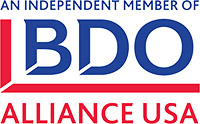
Recently, Izabela Poludniak, a senior audit manager here at Sassetti LLC, put out a great blog post which delves deeply into the subject of how donors can be more conscious of where they direct their charitable dollars. I highly encourage you to go back and read her post. For part 2, I’d like to focus more on strategies that could help donors maximize their charitable giving income tax deductions. I think most would agree that their primary intention for donating cash and other tangible property is not for the tax deduction. However, it’s hard to argue that it is not nice to receive a tax benefit for those donations.
Before diving into the details, I want to provide a glimpse at the dialog that some taxpayers could find themselves having with their tax professionals next spring:
Frustrated Client: I’m sorry, are you saying that I’m not itemizing? Are you sure this isn’t a mistake? I’ve always itemized my deductions.
Tax Professional: Yes, unfortunately, this is not a mistake. There were quite a few changes in the tax law that affect 2018 and subsequent years going forward. It would seem now that fewer taxpayers are able to take advantage of itemized deductions without additional planning.
Frustrated Client: This is disheartening to hear. I made a number of donations this year and even made a few charitable drop-off trips in December.
Tax Professional: That is disheartening, but now that we’re aware of how the new tax law specifically affects you, we can create a plan for going forward.
You may find yourself in a similar scenario, but there is good news: the year is not done yet and you still have time to make adjustments to your charitable strategy.
In December 2017, Congress passed the Tax Cuts and Jobs Act of 2017, often abbreviated TCJA. TCJA made sweeping changes to the tax code that impact most taxpayers. In general, charitable donations did not have as dramatic of changes as other areas of the tax code. At first glimpse, the primary change that increased the cash donation deduction AGI limit from 50 percent to 60 percent appears promising. However, there were changes to other itemized deductions that either limit or eliminate them altogether. Further, the standard deduction was increased to $12,000 for single filers, and $24,000 for married filing jointly. These changes, coupled together, will make it so that numerous tax filers who itemized in prior years will now claim the standard deduction.
All is not lost, though, for the much-favored charitable tax deduction. As with organized sports, when a team realizes that their old game-winning strategy is no longer effective, they draft a new playbook. The same can be said for charitable deductions.
Here are some new strategies for taxpayers to consider –
Bunching: This is the unofficial name that was given to the idea of concentrating more charitable donations in certain years, and less in others. A simple example is a married filing jointly couple that donates, on average, $5,000 annually. They would no longer be eligible to itemize, as their total itemized deductions come to only $21,000 for the year. They instead would take the standard deduction of $24,000. If they were to donate $10,000 every other year, rather than $5,000 each year, they would push their itemized deductions to $26,000 in those bunched up years. They would enjoy the benefit of itemizing in some years, and then have the standard deduction for other years.
Donor-Advised Funds: A reasonable concern for those considering the bunching strategy is how the reduction of donations in certain years could affect their favored charities. A potential solution is to donate through a donor-advised fund. Donor-advised funds allow the donor to make large donations in one year, for which they receive a tax deduction. The funds are invested and able to grow, tax free, over time. The donor has the ability to recommend which charities their funds are donated towards. Donors are typically able to donate as frequently and as much as they like; however, we always recommend donors confirm these specific details with the donor-advised fund administrator prior to establishing an account for themselves.
IRA Qualified Charitable Distributions: This is not a new strategy, but still a very relevant and effective one. Individual taxpayers age 70 ½ can make a qualified charitable distribution (QCD) from a qualifying IRA of up to $100,000 per year. The advantage here is the charitable donations directly reduce taxable distributions and qualify as your required minimum distribution for the year. This approach bypasses itemized deductions altogether, so those taking the standard deduction will still enjoy the tax benefit. The federal tax benefit implications will be similar to itemizing, or potentially better, depending on other circumstances such as taxability of social security income, long-term capital gains treatment, and all items that are based on adjusted gross income (i.e. Medicare premiums).
State Income Tax Considerations: Each state has its own set of income tax laws and rules, which may or may not follow federal income tax law. Being mindful of these rules can yield some state income tax benefits as well. Take Illinois, for example. In general, the state does not offer a deduction for charitable contributions. However, one program that Illinois instituted for 2018 is Invest in Kids, which offers taxpayers a 75 percent income tax credit for contributions made to a qualified scholarship-granting organization.
These strategies do not form an exhaustive list, and are definitely not one-size fits all. If you are interested in discussing which strategies would work best for your own situation, please don’t hesitate to reach out to our offices. We offer a free 30 minute initial consultation for our new prospective clients.




